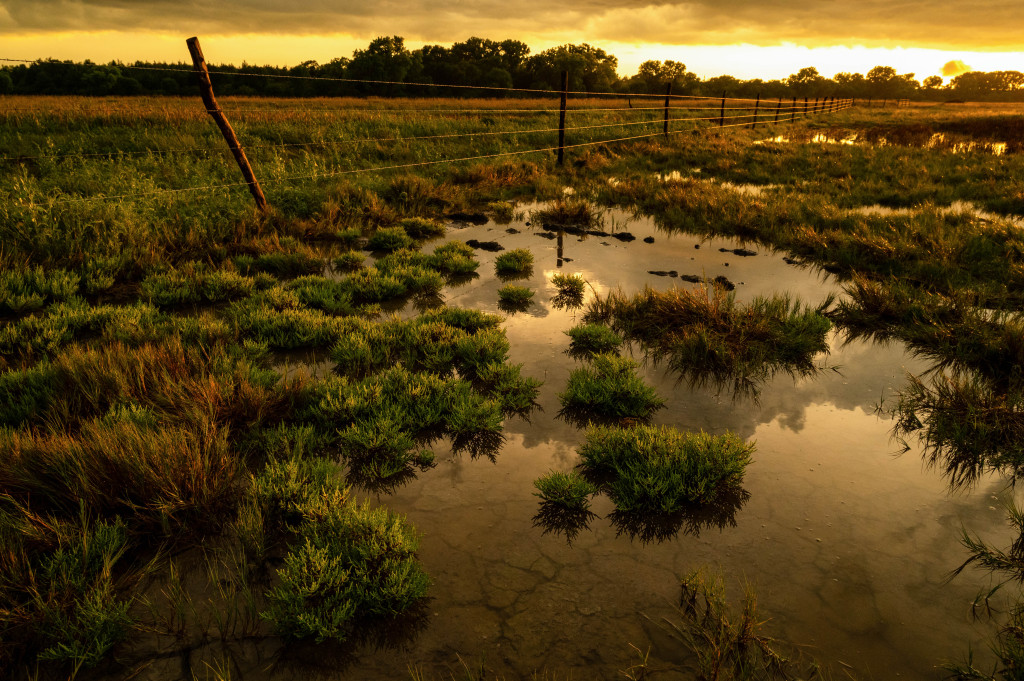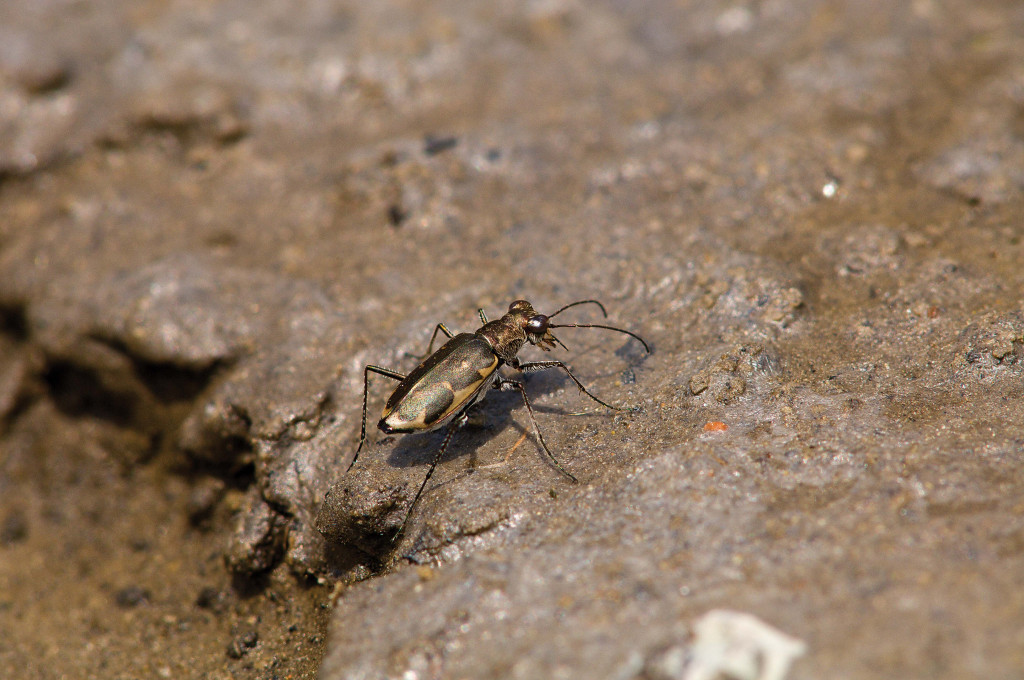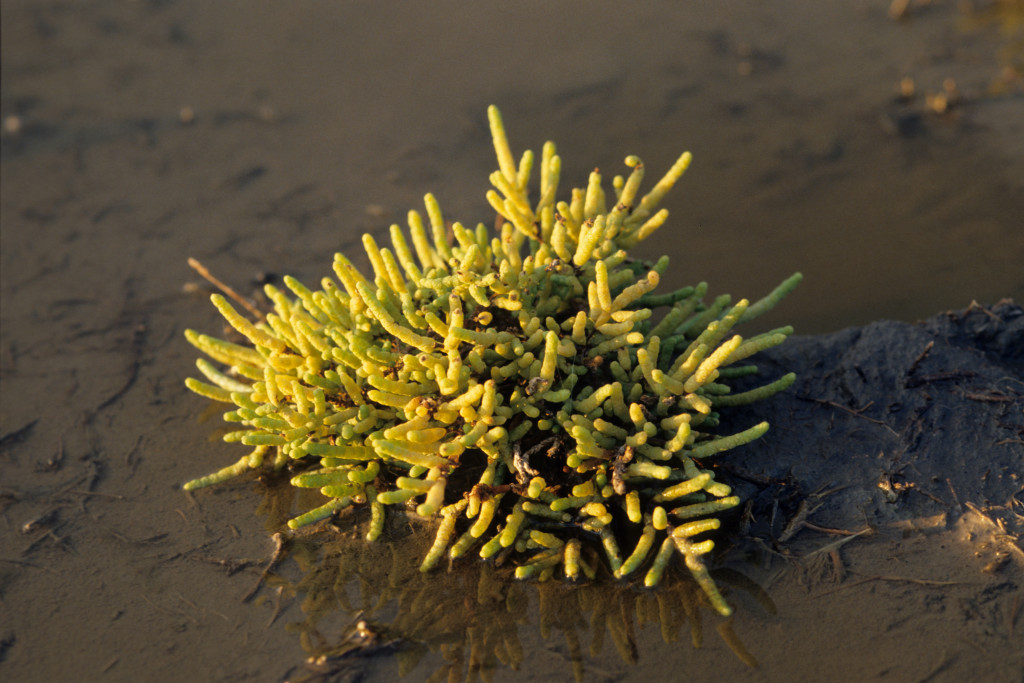
By Monica Macoubrie, Wildlife Education Specialist
One would never guess looking at Nebraska’s prairies: A hundred million years ago, it was once a vast sea inhabited by shark-like marine reptiles, and when the sea finally retreated, it left behind remnants of salt, and quite a bit of it. The saline wetlands that surround our capital city, Lincoln, is still as salty as today’s oceans.
Nebraska is far from any coastline, more than 1,000 miles to be specific, yet it is one of few places in the United States where the water is naturally saline. In Nebraska, these areas as known as saline wetlands, or salt marshes. Wetlands are some of the most efficient ecosystems in the world, providing not only flood protection but also refuges for many unique species that have adapted to the salty conditions.
Wetlands cover nearly a million acres of land throughout the state. However, the salt marshes in Lincoln are the most endangered, covering nearly 2,016 miles on the outskirts of Lincoln and contained within the Salt Creek watershed. The Salt Creek flows nearby, which is a tributary of the Platte River. This fascinating, unique landscape is home to many species found nowhere else on earth. This article will focus on two of those highly adapted species – one plant and an invertebrate.

Salt Creek Tiger Beetle (Cicindela nevadica lincolniana)
Salt Creek tiger beetles are some of the rarest insects, not only in the world, but also in Nebraska. These small, scurrying invertebrates call the saline wetlands their home and are perfectly hardwired for a life out on the salt flats of Lancaster and Saunders counties.
Although the Salt Creek tiger beetle spends most of its life as a larva, it is usually observed in its adult stage, because the larvae live underground. Larvae are soft-bodied and caterpillar-like in appearance with large, dark heads and large mandibles for feeding. Male and female adult beetles are about a half-inch long. They are metallic brown to dark, olive green on the top side and metallic green on the underside. Adult beetles have sickle-shaped mandibles for catching their prey.
Historically, Salt Creek tiger beetles covered a large area of Lancaster and southern Saunders counties. These wetlands were once so extensive that J.P. Morton, of the Morton Salt Company, tried mining salt from the area. However, since the late 1880s, these saline wetlands have primarily been lost to the development of Lincoln, the construction of levees, straightening of nearby stream channels for flood control, and draining and filling for various purposes.
Salt Creek tiger beetles may be small, but they are voracious hunters. As larvae, Salt Creek tiger beetles remain idle near the top of their burrows and ambush small insects that pass near the burrow opening in a tiger-like fashion. The larvae pull the captured prey into the burrow and feed.
Adult tiger beetles are also predaceous and capture various insects and spiders for feeding. Adult tiger beetles are sight predators, meaning they use sight (not sound or touch) to hunt. They move with extremely fast bursts of speed to catch prey. Scientists have said that tiger beetles move so fast that they often have to stop mid-run and orient themselves to find the direction in which they want to go forward.
Like most insects, the Salt Creek tiger beetle undergoes complete metamorphosis as part of its life cycle: stages include egg, larva, pupa and adult. The beetle has a two-year life cycle, spending two years as a larva and six weeks as an adult in its second year. During its short adult life, adult Salt Creek tiger beetles spend most of their time reproducing.
Adult beetles are active between late May and mid-July, with peak numbers in mid- to late June. After mating, male beetles will ride atop the female to prevent other males from mating with her. Female beetles lay eggs one at a time in moist soil, and when the larvae hatch, each individual constructs its own burrow for feeding, shelter and overwintering. Salt Creek tiger beetle larvae will seal off their burrows during stressful conditions, such as extremely hot or dry weather or heavy rain events. Larvae build a side chamber to their burrows for pupating and remain in the chambers until emerging as adults.
Several efforts have been made since the 1990s to actively manage, restore and protect saline wetlands for the benefit of the Salt Creek tiger beetle in Lancaster County. Although habitat has been greatly reduced from historic levels, much of what remains is protected from development. Conservation partnerships, such as the Eastern Saline Wetlands Partnership, have been extremely effective at conserving saline wetland habitat through land acquisition.
There are also ongoing efforts to raise beetles in captivity at Omaha’s Henry Doorly Zoo and Lincoln’s Children’s Zoo. These beetles are periodically released to help increase the number of beetles in the wild. Ongoing conservation work includes habitat improvement projects for the benefit of the beetles.

Saltwort (Salicornia rubra)
In the saline wetlands, many plants have adapted to living in the salty environment, and one of the best known, yet endangered plants, is known as glasswort, red glasswort or the most common name, saltwort. This plant is a tap-rooted annual with an extremely low-growing, fleshy, succulent stem that only reaches 3-4 inches in height. As the seasons change, so do the colors of the round stems. In summer, the stems are green but fade to red as the plant dries and wither in the fall. Although this plant appears leafless, it actually has small scaly leaves that lay flat against the stems. It also has small, green inconspicuous flowers.
So, how does a plant survive in such salty conditions? Saltwort is one of the few plants that can grow in the middle of the salt flats due to its ability to retain water even in the alkaline soils of the saline wetlands. The plant’s large tap root also grows straight down into the ground, enabling the plant to reach water and nutrients far below the soil’s surface. Since saltwort is an annual plant, it relies on seed replanting to repeat its annual life cycle. Under optimum growing conditions, saltwort does form dense colonies. When conditions are poor, saltwort will grow extremely small, and plants will be more spread apart. There are other plants that grow with saltwort, such as seablite and saltgrass, but saltwort is the only plant that can stand spots of extremely high alkalinity within the soil.
Habitat destruction and degradation are major threats to saltwort. Since settlement, more than 90 percent of Nebraska’s saline wetlands have been destroyed or highly degraded through drainage or filling for agricultural, commercial and residential development. And because of these developments, increased freshwater runoff into the saline wetlands decreases salinity levels in these habitats, allowing non-salt-tolerant plants to invade. Saltwort requires highly saline soils and cannot survive in freshwater wetlands or in competition with freshwater plants. Although saltwort is not listed as a federally threatened or endangered species, it is listed as a Nebraska endangered species.
Numerous conservation groups are working to protect the remaining saline wetlands in Lancaster and Saunders counties. The Saline Wetlands Conservation Partnership – a partnership between the City of Lincoln, Lancaster County, Lower Platte South Natural Resources District, the Nature Conservancy and the Nebraska Game & Parks Commission – is as a critical piece in conserving Nebraska’s saline wetlands. The partnership provides education, land acquisition and management for many remaining tracts of saline wetlands.
